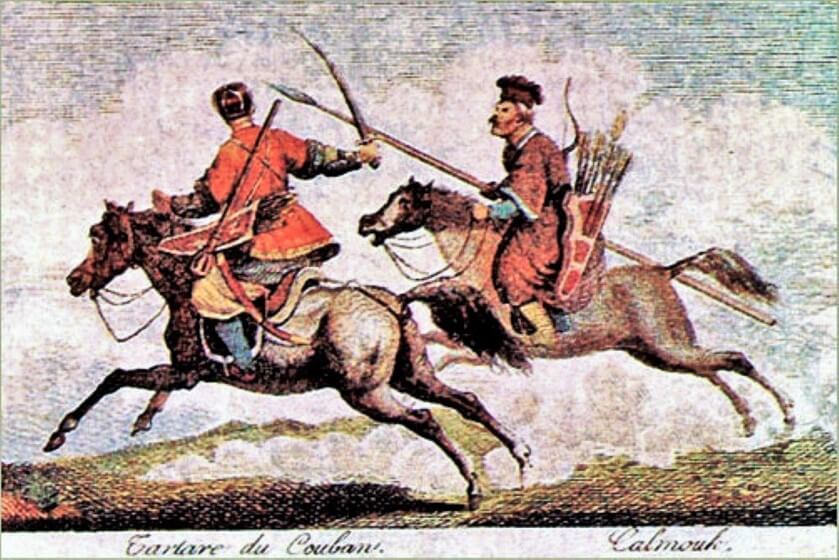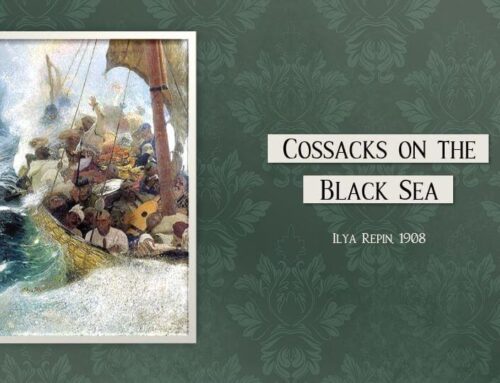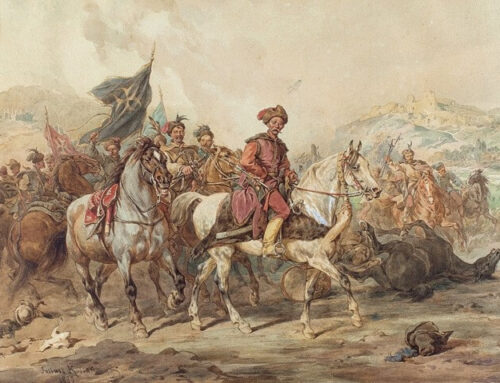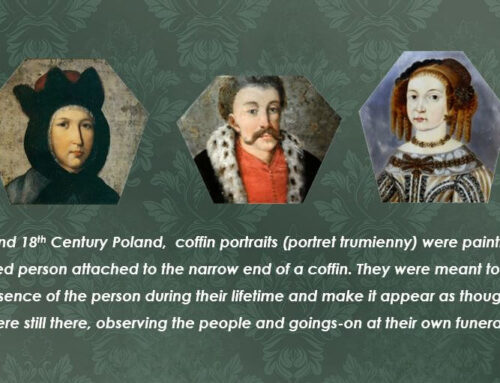As I’ve researched 17th century Poland for my Winged Warrior Series, I have been struck by many discoveries in this historical era known as the early modern period. One of the most profound is how dangerous and violent the times were during which people lived and raised their families. I try to mentally transport myself back to those days and imagine what it must have been like, and it’s truly sobering.
My view could simply be cast by the lens through which I’m looking. After all, the central character in each of my books was trained from childhood to be a winged hussar, an exceptionally fearsome cavalryman and fighting machine. Warfare is what he would have known nearly his entire life, and to write about such a personality means delving into that world. Had I focused on the smithy in a village, maybe the landscape would have been different … or would it?
Perhaps not so dissimilar after all, if his village happened to be located in the borderlands between the Polish-Lithuanian Commonwealth and its neighbors to the south, many of them vassals of the Ottoman Empire: Moldavia, Transylvania, Wallachia, and the Crimean Khanate. That smithy’s life—and that of his family—would have balanced on the edge of a precipice where he dealt with everyday life struggles in relative freedom. Go to bed that night thinking about tomorrow’s tasks, and he might very well wake up to chaos and death, on his way to someplace far and foreign, separated from wife, children, parents, everyone and everything he knows … doomed to be a slave the rest of his life.
If you’ve read any of the books in my series, you’re already familiar with the Tatar art of warfare. That warfare was conducted mainly through raids, targeted at vulnerable villagers like our smithy, who populated the southeast portion of the Commonwealth and Muscovy (Russia). These skirmishes occurred not on a battlefield, where warrior faced warrior, but in the dead of night against a settled population. These sedentary non-combatants, in fact, were the targets. The Tatar raiders made these folk the primary objectives of their missions for one reason: capturing European civilians and their property supported the Crimean Khanate’s economy, which was based almost entirely on slave trade. These annual raids, therefore, were paramount to the Tatar Horde’s survival.
Nomadic and skillful, the Tatars normally carried out their assaults in the warmer months. With the arrival of spring, Commonwealth fortresses along the border and the troops manning them went on high alert. Some were Crown quarter troops and others were magnates’ private armies, placed there to engage with and deter the Tatars’ destructive actions. The Tatars, however, deftly avoided such armies and fortifications, instead melting into forests and landscapes that led them to the defenseless settlements they sought.
The trademark of the Tatar assault was terrifying stealth, to hit and run, stunning their prey in the dark by setting fire to buildings, forcing sleepy and dazed citizens into the open where they were easily rounded up. The attacks were swift, brutal, and extremely efficient. By the time soldiers arrived to rescue the citizens, they, along with their livestock and property, were long gone. Tatars were elusive in pursuit as well, artfully employing well-organized logistics and intelligence garnered in reconnaissance to make good both their attacks and their getaways. They often used the intelligence they uncovered and the “fog of war” to spread misinformation that confused the enemy. As a result, they were often likened to so much smoke, and I find it an apt comparison. Even Polish commanders who fought them admired the Tatars’ maneuvers.
Though they succeeded in depopulating the Wild Fields (also known as the Wild Plains, Pontic Steppe, or Eurasian Steppe), their raids were surprisingly small. An absolute count is difficult to pin down, but historians estimate that Poland alone lost a million citizens over the span of two hundred years beginning in the late 15th century.
How terrifying it must have been to be a Pole whose life was completely uprooted in the blink of an eye.
I continue my research for Book 4 (as yet untitled), which will take place a year after The Hussar’s Duty, and I recently read an abstract about the Tatar military art of war. In it, the author describes the type of warfare employed by the Tatar hordes as “asymmetric,” which made me pause and ponder.
A modern-day term, Merriam-Webster defines asymmetric warfare as “warfare that is between opposing forces which differ greatly in military power and that typically involves the use of unconventional weapons and tactics (such as those associated with guerrilla warfare and terrorist attacks).” Indeed, it’s a most interesting way to define the manner in which the Tatars engaged, but when one considers their strikes and those of the guerilla fighters defending their home soil in Vietnam, for instance, similarities abound, such as: using intelligence to their advantage, attacking despite being outnumbered, employing stealth, and disappearing like smoke after their swift assaults.
However one labels the Tatar raids, the attacks were a festering bur between the Commonwealth and the Ottoman Empire, for those raids were condoned—encouraged, even—by the Ottomans. On the other side of the equation, however, the Cossack raids on Ottoman lands were also a thorny impediment to peaceful relations between the two realms.
When the Commonwealth demanded an end to the enslavement of its people, both the Porte (the Ottoman governing body) and the Tatar leadership returned justifications for the strikes by citing Poland’s nonpayment of tributes in accordance with various treaties and the ongoing Cossack raids on the Black Sea. Interestingly, there is a letter penned in 1624 by Kantymir Murza, the Tatar leader featured in The Hussar’s Duty, to King Zygmunt III, threatening to invade as far north as the Baltic Sea and lay waste everything in the Tatar army’s path–in retaliation for the Crown’s failure to comply with the agreement outlined in the 1621 Treaty of Chocim.
Whether one reviles, admires, or simply contemplates the Tatar art of warfare, removing a million citizens from one country alone points to that art being quite effective. I’m just grateful I’m a citizen of the twenty-first century living where I do!
The Hussar’s Duty, in which the Tatars have a starring role, was recently on a blog tour. Check out my guest post about the Ottoman Invasion on the Historical Fiction Blog.









Leave A Comment